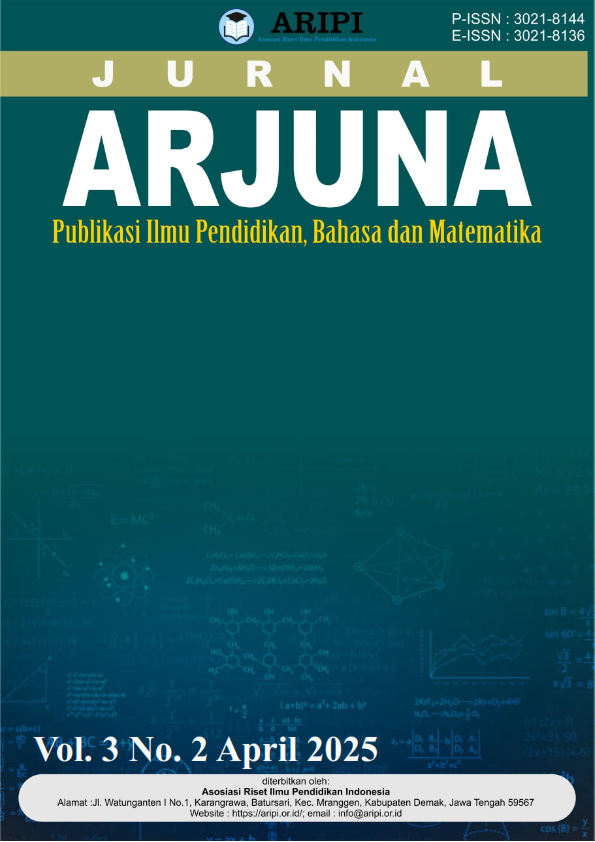Strategi Penerapan Disiplin Sekolah di SDIT Bunayya Lhokseumawe
DOI:
https://doi.org/10.61132/arjuna.v3i2.2369Keywords:
Character, Discipline, Lhokseumawe, SDIT Bunayya, StrategyAbstract
This study aims to identify and analyze the implementation strategies for discipline at SDIT Bunayya Lhokseumawe, a school committed to developing an intellectually intelligent and morally superior Islamic generation. In the context of modern education, educational institutions no longer merely serve as a place to transfer knowledge but also have a significant responsibility in instilling moral, ethical, and spiritual values. Implementation is a crucial aspect of discipline in achieving the goal of developing a holistic student character. However, the reality on the ground shows that challenges to implementing discipline are increasingly complex. The negative influence of social media, rapid technological developments, and changes in parenting patterns in families often influence student behavior. The strategic role of educational institutions is crucial, especially in building a system capable of consistently and sustainably instilling disciplinary values. This study used a qualitative approach involving the principal, teachers, and students as the main subjects. Data collection techniques were carried out through direct observation, in-depth interviews, and documentation of school activities. The results showed that the strategies implemented at SDIT Bunayya include a collaborative approach involving all elements of the school, including parents. Character training programs, regular training, clear enforcement of rules, and targeted extracurricular activities are integral parts of the school's discipline system. A disciplined and conducive learning environment has been proven to support both academic achievement and character development. Therefore, the strategies implemented at SDIT Bunayya can serve as a model for other schools, particularly integrated Islamic schools, which share a similar vision of developing a generation that excels not only academically but also possesses integrity and noble character.
Downloads
References
Bronfenbrenner, U. (1979). The ecology of human development: Experiments by nature and design. Harvard University Press. https://doi.org/10.4159/9780674028845
Gardner, H. (1991). The unschooled mind: How children think and how schools should teach. BasicBooks.
Hirschi, T. (1969). Causes of delinquency. University of California Press.
Kementerian Pendidikan dan Kebudayaan Republik Indonesia. (2017). Penguatan pendidikan karakter. Kemendikbud.
Lickona, T. (1991). Educating for character: How our schools can teach respect and responsibility. Bantam Books.
Moleong, L. J. (2017). Metodologi penelitian kualitatif. Remaja Rosdakarya.
Muhaimin, S., Suriansyah, A., & Asnawi, M. (2009). Manajemen pendidikan: Aplikasinya dalam penyusunan rencana pengembangan sekolah/madrasah. Kencana.
Nasution, S. (2008). Berbagai pendekatan dalam proses belajar dan mengajar (7th ed.). Bumi Aksara.
Skinner, B. F. (1974). About behaviorism. Alfred A. Knopf.
Sugiyono. (2016). Metode penelitian kualitatif, kuantitatif, dan R&D. Alfabeta.
Tilaar, H. A. R. (2009). Manajemen pendidikan nasional: Kajian strategis kebijakan pendidikan dalam era global. Remaja Rosdakarya.
Wahjosumidjo. (2002). Manajemen pendidikan: Strategi pengembangan organisasi pendidikan. Rineka Cipta.
Wahyudi. (2015). Disiplin dan pembentukan karakter anak sekolah dasar. Pustaka Pelajar.
Wolfgang, C. H., & Glickman, C. D. (1986). Solving discipline problems: Strategies for classroom teachers. Allyn & Bacon.
Downloads
Published
How to Cite
Issue
Section
License
Copyright (c) 2025 Jurnal Arjuna : Publikasi Ilmu Pendidikan, Bahasa dan Matematika

This work is licensed under a Creative Commons Attribution-ShareAlike 4.0 International License.






